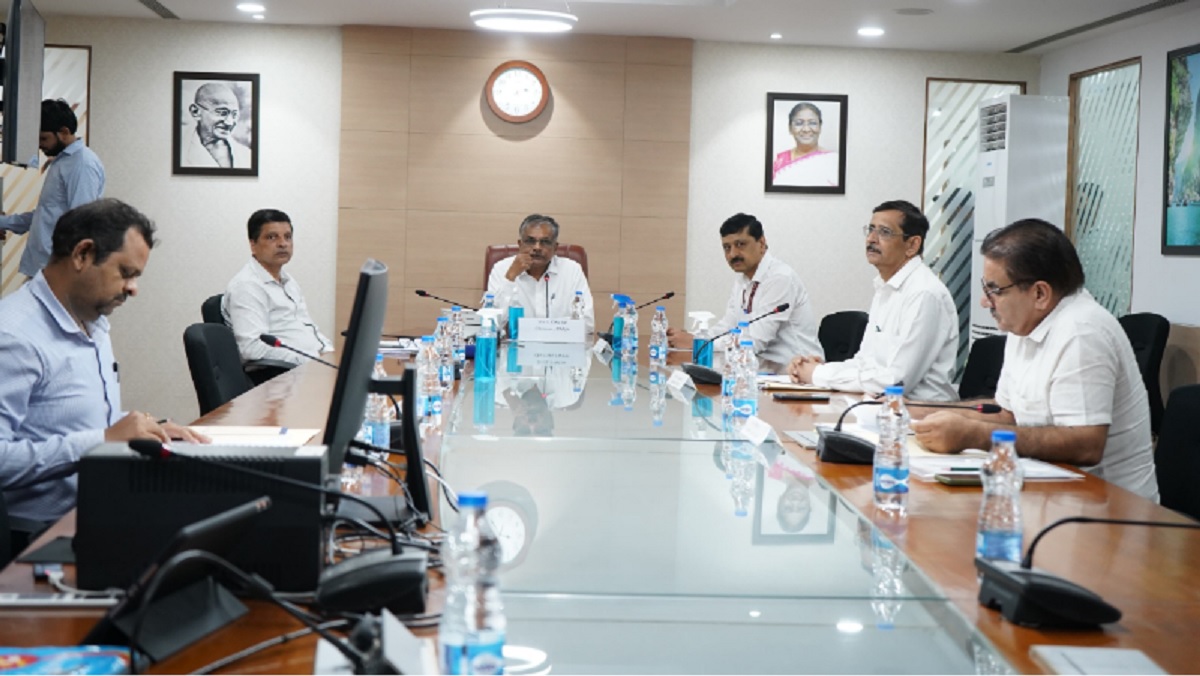The CWMA was on Tuesday, 29 August, only upholding the recommendations of the Cauvery Water Regulation Committee.
Published Aug 30, 2023 | 2:15 AM ⚊ Updated Aug 30, 2023 | 5:19 AM

According to sources, the Tamil Nadu government has decided to approach the Supreme Court against the CWMA directive.
Though the Cauvery Water Management Authority (CWMA) directed Karnataka to release 5,000 cusecs of water from the Biligundlu reservoir for the next 15 days, officials from Tamil Nadu are upset that the order would not help the state’s farmers in any way.
The CWMA was on Tuesday, 29 August, only upholding the recommendations of the Cauvery Water Regulation Committee (CWRC).
According to sources, the Tamil Nadu government has decided to approach the Supreme Court against the CWMA directive.
Meanwhile, the BJP, which is in the Opposition in Karnataka, has already accused the Congress regime in the state of pandering to the neighbouring state because it wants to be on the right side of the DMK, which is in power there.
Tamil Nadu Water Resources Department Additional Chief Secretary Sandeep Saxena and Cauvery Technical Cell Chairman R Subramanian participated in the 3.5-hour meeting of the CWMA that started at 2.30 pm on Tuesday.
Speaking on behalf of the state, they insisted that Karnataka should have opened the Cauvery water as per the directions of the Supreme Court.
The officials also claimed that Karnataka had not supplied the state’s share of water in June, July, and August so far, and that the water flow to the Mettur reservoir was being drastically reduced.
Raising concerns over the CWRC, which recommended the release of 5,000 cusecs for the next 15 days, the officials pointed out that the water is not enough and urged for a release of 24,000 cusecs from the Biligundlu dam.
Meanwhile, Tamil Nadu Water Resources Minister Duraimurugan told reporters in Chennai that given the prevailing conditions, Tamil Nadu needed at least 12,0000 cusecs every day for at least the next 10 days to save the “kuruvai” crops.
“Karnataka has already kept pending the release of the water for the months of June, July, and August. Despite the Supreme Court’s earlier orders, the required water has not been released. If our concerns are not heard, there is no option left except to approach the apex court.”
Meanwhile, Tamil Nadu Congress MP Thirunavukarasar told reporters that the party’s state unit would stand by the side of the DMK government and protest against Karnataka’s Congress government, insisting on the immediate and adequate release of water in Cauvery.
“Karnataka’s Congress government should follow the orders of the tribunal and Supreme Court in releasing water to Tamil Nadu,” he said.
Responding to the CWMA recommendation, Karnataka Deputy Chief Minister DK Shivakumar, who also holds the Water Resources portfolio, asserted that his government would take advice from legal experts on the matter.
Shivakumar told reporters in Mysuru on Tuesday: “We have fought before the committee. The technical committee has also argued effectively. The officials representing the government have also highlighted the reality of the state before the committee.”
He added: “There is a hearing in the Supreme Court on Friday. The officials have also advised us to ensure that the state does not face any damage in the apex court.”
Shivakumar also said: “I will also discuss with the state legal team and take advice from the advocate general. Our legal team has argued aggressively before the committee. We have also told the committee about the rain deficit and drought situation in the state.”
He continued: “I will discuss with the chief minister and take further decisions along with considering the opinion of legal experts. I have not given any instructions to release the water. I have just received the committee recommendations. The Union government is also under pressure because they have the key, I don’t have the key.”
Meanwhile, condemning the CWRC, farmers from various organisations staged demonstrations across Mandya in Karnataka on Tuesday.
The farmers staged a protest in a unique way by wearing black-coloured blindfolds in front of the Cauvery Neeravari Nigam office near the Krishna Raja Sagara (KRS) water reservoir in Mandya.
Enraged agrarians also blocked traffic on the Bengaluru-Mysuru National Highway in Mandya.
“The state government is least concerned about the local farmers. When we don’t have water, how should we give to Tamil Nadu?” enraged farmers. The farmers were likely to continue the protest on Wednesday.
It may also be noted that the farmers have been staging demonstrations every day since the Tamil Nadu government filed a petition in the Supreme Court seeking proper water supply from the Karnataka government.
However, the Supreme Court sought a report from the CWMA on the matter.
Currently, water reservoirs in the Cauvery River basin in Karnataka have only 62 percent of the water left.
There are four water reservoirs in the Cauvery basin: Harangi, Hemavathi, Kabini, and KRS.
According to the Karnataka State Natural Disaster Monitoring Centre (KSNDMC): “Of the total 114.57 tmcft gross capacity in the four reservoirs, only 71.42 tmcft of water is left.”
It added: “The Harangi reservoir has 7.82 tmcft against the maximum capacity of 8.50 tmcft. The Hemavathi reservoir has 25.71 tmcft against the storage capacity of 37.10 tmcft.”
It also said: “The KRS dam has 24.27 tmcft against the capacity of 49.45 tmcft. The Kabini dam has 13.61 tmcft against the maximum storage capacity of 19.52 tmcft.”
It may also be noted that since the onset of the southwest monsoon in Karnataka, the South and Malnad regions have recorded 29 percent and 41 percent rainfall deficit.

Jul 27, 2024

Jul 26, 2024

Jul 26, 2024

Jul 26, 2024

Jul 26, 2024

Jul 26, 2024